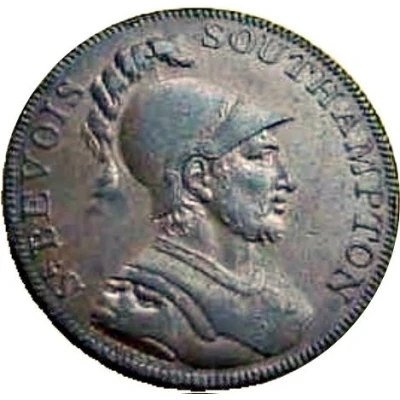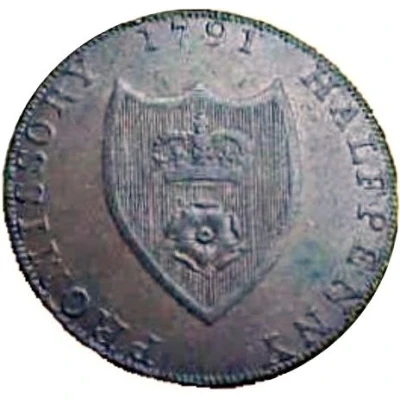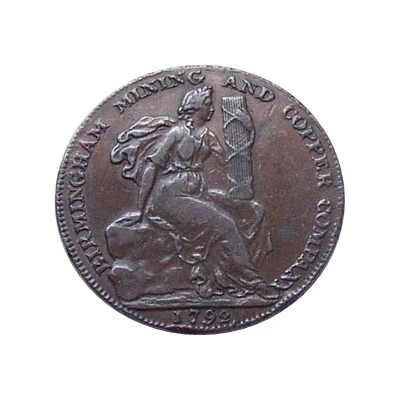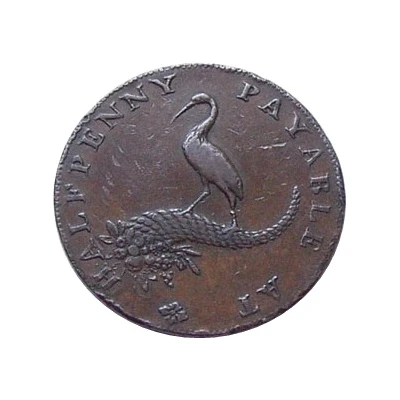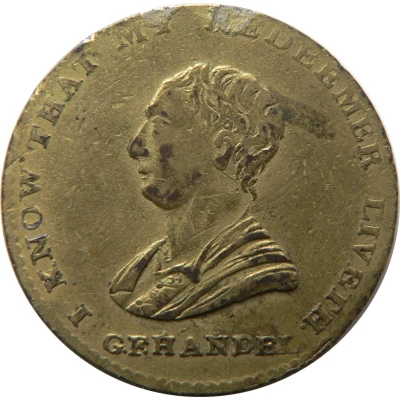
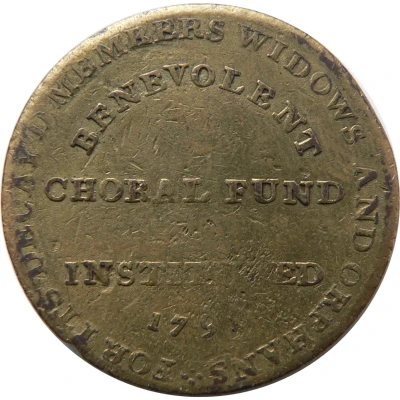

© ZacUK
½ Penny Middlesex - Political and Social series / Handel
1791 year| Brass | 10.36 g | 28 mm |
| Issuer | United Kingdom (United Kingdom, British Overseas Territories and Crown Dependencies) |
|---|---|
| Type | Token |
| Year | 1791 |
| Value | ½ Penny (1⁄480) |
| Currency | Conder tokens (1787-1797) |
| Composition | Brass |
| Weight | 10.36 g |
| Diameter | 28 mm |
| Thickness | 1.5 mm |
| Shape | Round |
| Technique | Milled |
| Orientation | Coin alignment ↑↓ |
| Demonetized | Yes |
| Updated | 2024-10-09 |
| Numista | N#109177 |
|---|---|
| Rarity index | 95% |
Reverse
Four lines of inscription in the centre, of which the lower one is a date; the upper and lower lines curved. Lettering around, with symbol of four dots in a diamond shape separating beginning from end
Script: Latin
Lettering:
BENEVOLENT CHORAL FUND INSTITUTED 1791
FOR ITS DECAY’D MEMBERS WIDOWS AND ORPHANS *
Edge
Plain
Comment
George Frederick Handel was a celebrated English composer and a contemporary of Johann Sebastian Bach. He is also portrayed on the reverse of a 1797 Norwich, Norfolk halfpenny token. Though German-born, he moved to London in 1727 and achieved great fame writing music for the coronation of King George II, plus other works.This token was probably issued by the organisers of the fund as a means of raising money. Handel died in 1759 and the use of his name in connection with a choral fund appeal indicates the continuing popularity of his music. The quotation is from the ‘Messiah’ and the book of Job [19:25].
Also struck in copper, similar varieties exist (DH#1021, DH#1022).
Interesting fact
One interesting fact about the Token ½ Penny (Middlesex - Political and Social series / Handel) 1791 from United Kingdom is that it features a portrait of George Frideric Handel, a famous German-British composer, on one side, and an image of a harp and the words "HANDEL'S HARP" on the other side. This coin was part of a series of tokens issued by the Middlesex Political and Social Club, which aimed to promote political and social awareness and discussion among its members. The use of Handel's image on the coin reflects his popularity and influence in British society at the time.
